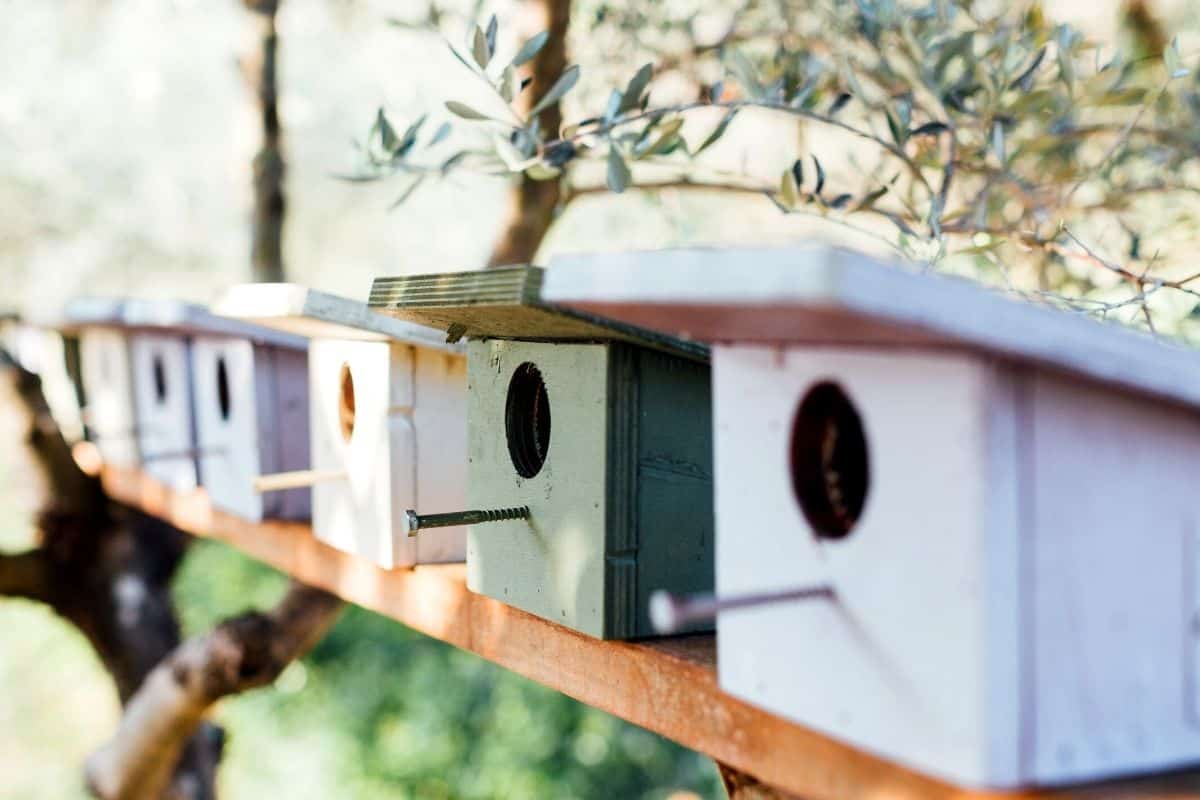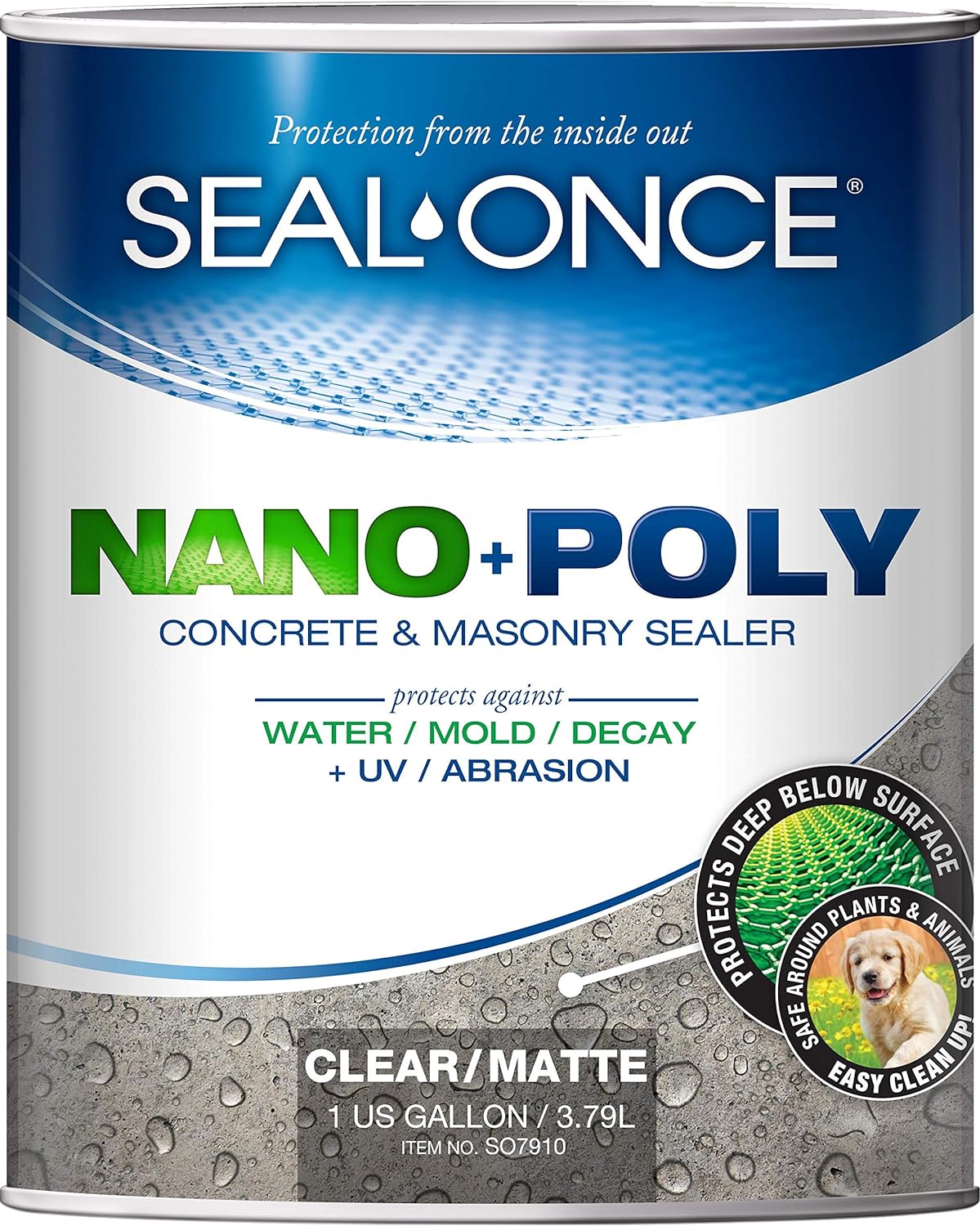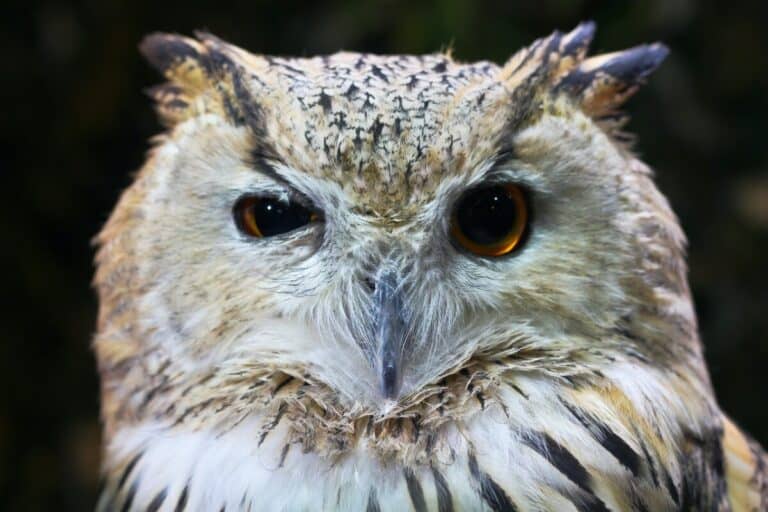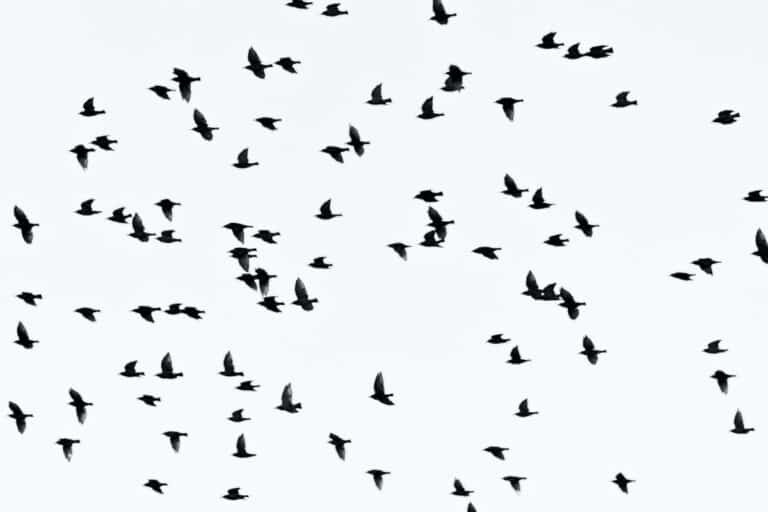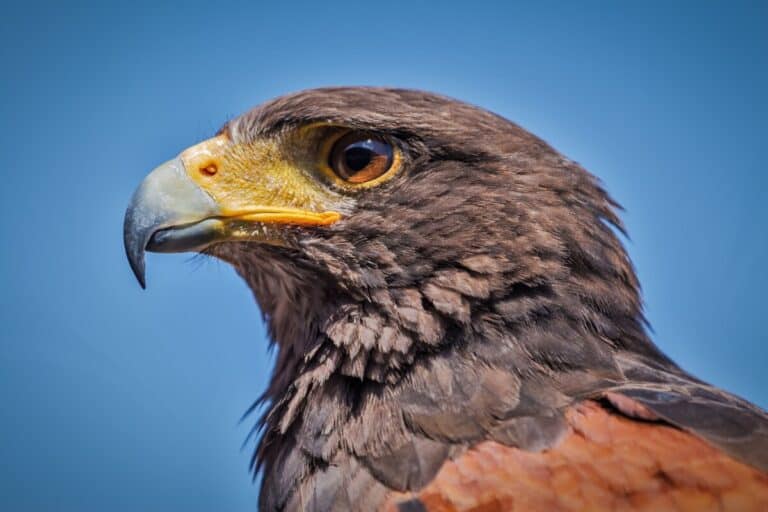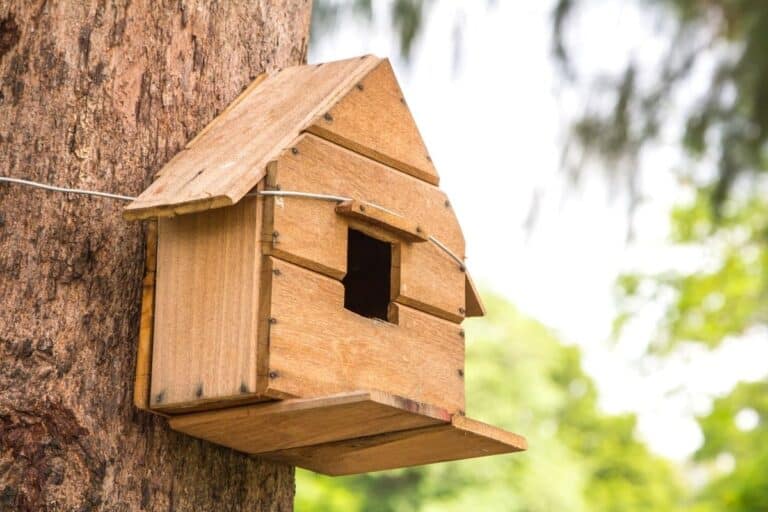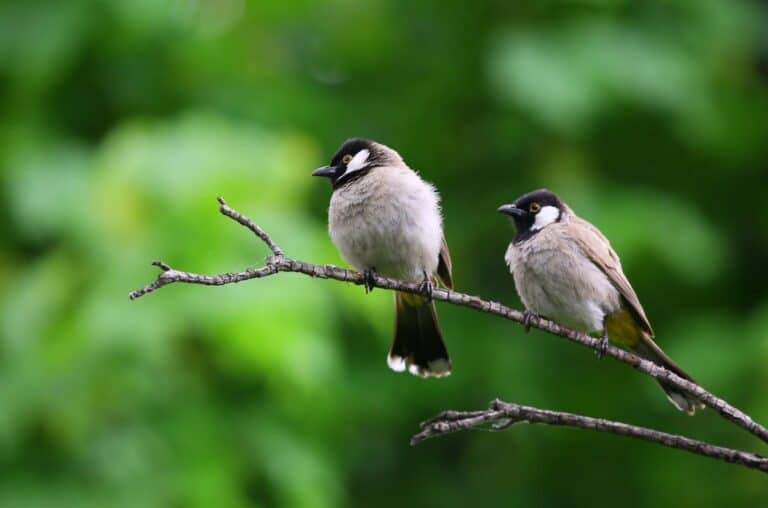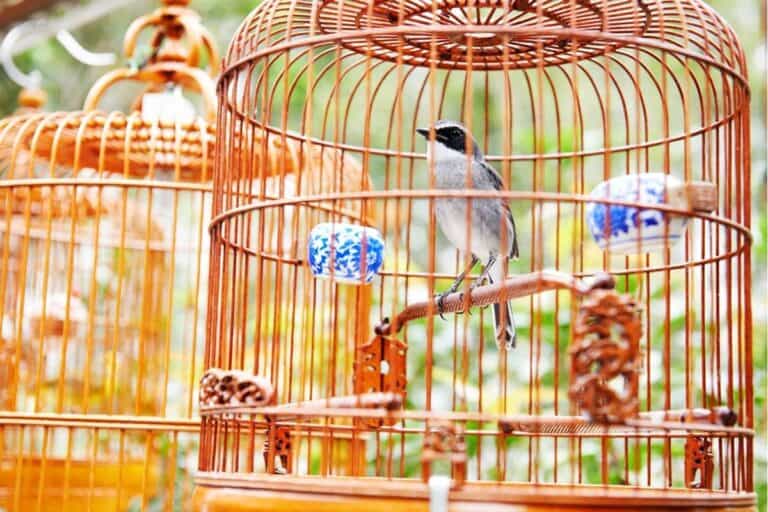Safe Paint for Birds: 15 Key Things You Must Know!
We’re reader-supported; we may earn a commission from links in this article.
It’s difficult to determine what kinds of paint are safe for birds.
No worries, I’ve got you covered!
Since I have done lots of research online, I thought to share my answer on what kinds of paint are safe for birds.
Here’s what I found:
Oil-based, latex, acrylic, or watercolor paints are safe for birds. These paints are non-toxic and will not cause any harm to birds. Paints should also contain low or no Volatile Organic Compounds (VOCs) with toxic fumes when freshly painted. All paint must be fully dried before bird usage.
Now that you know what kind of paint is safe for birds, it’s also important to know which type of paint to use for the specific item you are painting for.
For more details on this, read on to find out more!
1) Importance of Using Bird-Safe Paint
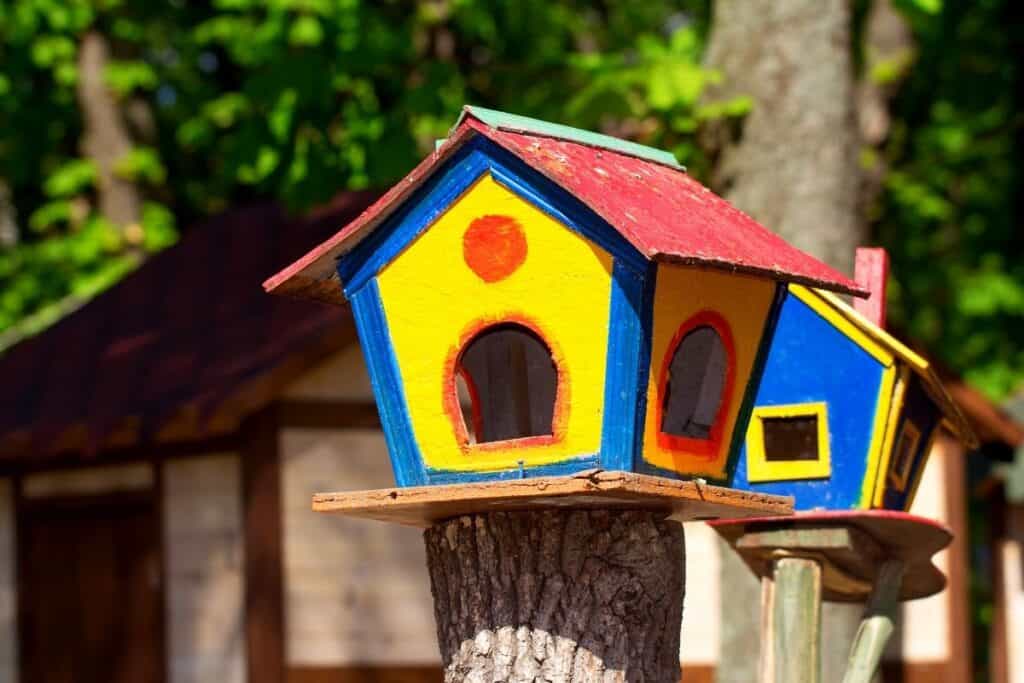
Picking the right type of paint for painting items used for birds is SUPER important! Ideally, you wouldn’t want to harm any birds while beautifying your items.
Here are three reasons using safe paint for birds is important:
(a) Pet Birds Can Scratch Out Paint
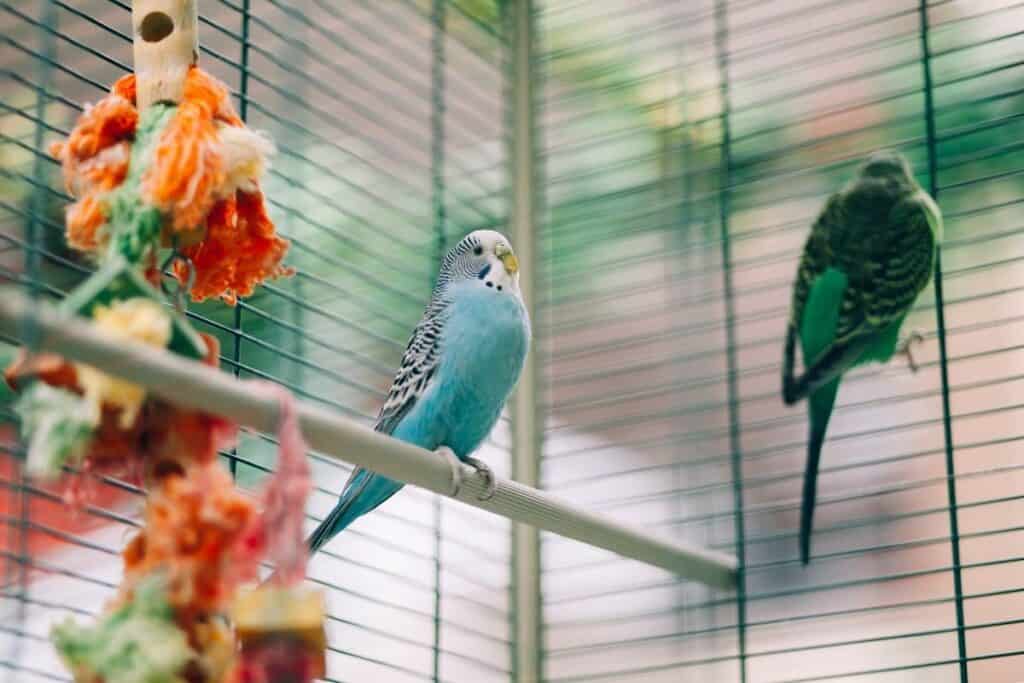
If you’re painting an item for your pet bird, you may have to remember that your pet bird may scratch out the paint quite easily.
For example, if you plan to paint a bird cage, your bird may frequently perch, climb or even bite off some of the paint on the bars.
Over time, the paint may also fall off due to wear and tear.
Therefore you MUST understand the importance of non-toxic paint for painting items for your pet birds.
(b) Bird baths, Birdhouses, and Bird Feeders are Subjected to the Outdoor Elements
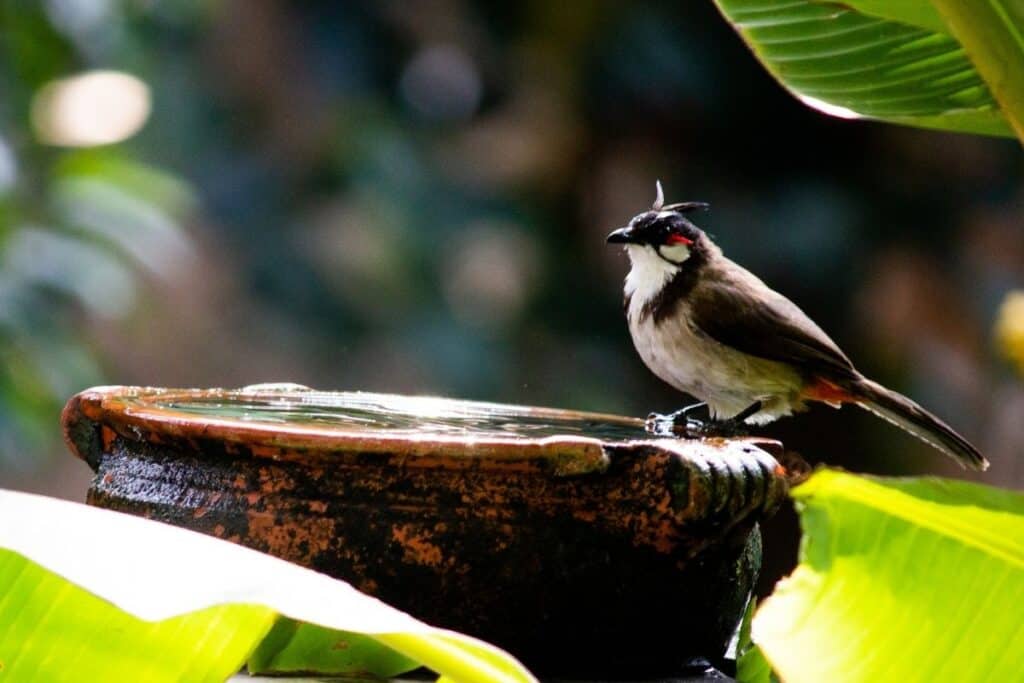
If you plan to do a little paint project for a bird bath, birdhouse, or bird feeder, then you’ll know these items are usually left out in the open – probably in your backyard!
Naturally, these items that you are about to paint will be subjected to lots of weather and climate conditions.
That can be rain, shine, or even snow.
If you live in a very hot and humid country, the paint may also change in its properties over time.
Therefore it is important to pick safe paint for these items with properties such as non-toxicity, UV resistance, and water resistance.
NOTE: I will give some recommendations for paint options when I go into more detail later on in this post. Read on!
(c) Paint is Subjected to Repeated Avian Usage
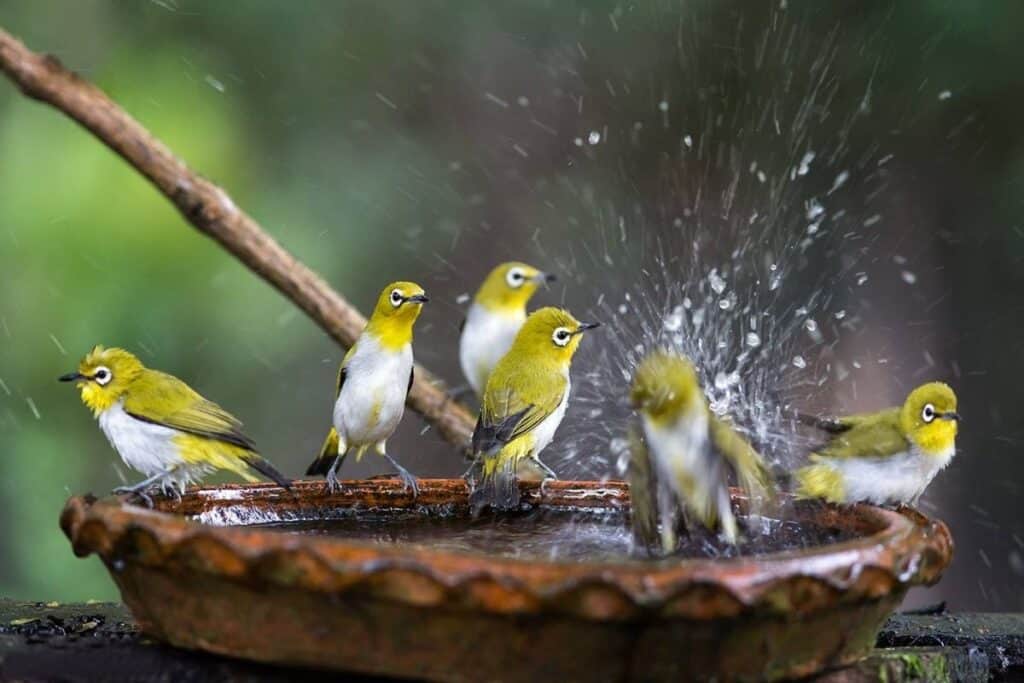
Whether you are planning to paint an item for your pet bird or wild birds in your backyard, you know that it will be used by a bird often.
If you know birds, you’ll know that they simply poop a lot! And… they also leave all kinds of debris behind like feathers, dirt, food, and so on.
In such cases, we must use paint that is sufficiently and easily sealed by a sealant that can be protected against all of that dirt and chemicals.
The last thing you want to happen is for the paint to wear out easily, which you then need to maintain by repainting them all over again!
As such, a good sealant goes a long way with safe paints for your bird’s items!
2) Is Paint Bad for Birds?
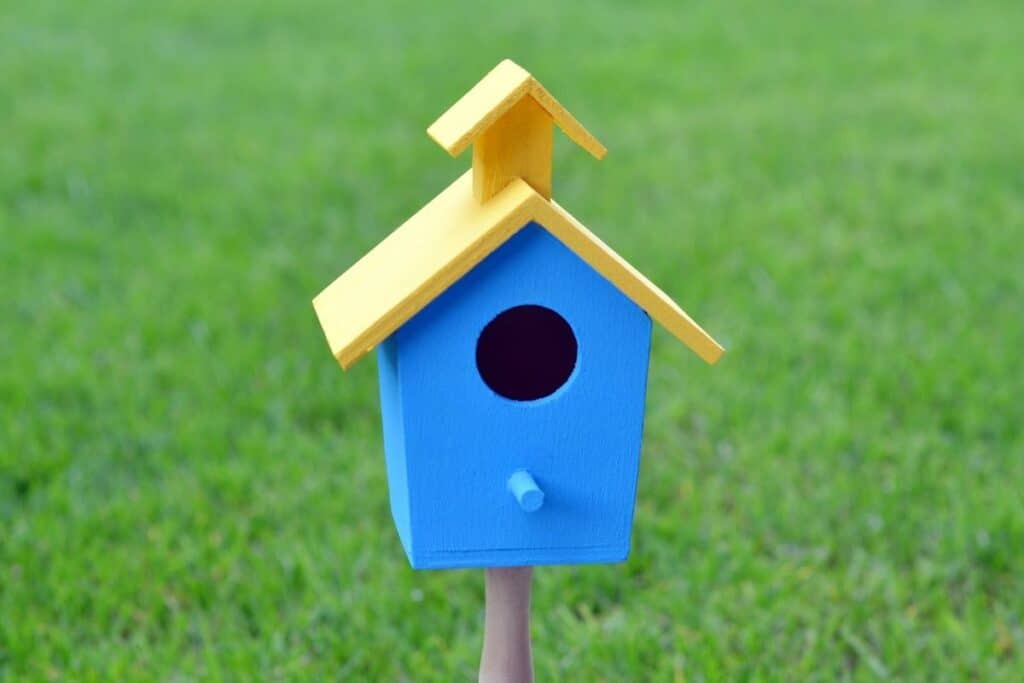
Paint is not bad for birds. Paint is completely safe for birds if non-toxic paints like oil-based, latex, acrylic, or water-based paints. Paint without VOCs, lead, chromate, and zinc are safe for birds.
Painting the items that birds use, like cages, bird baths, birdhouses, and more, can make them look so much more pretty and pleasant.
An appropriate-colored bird bath can attract more birds to it.
That being said, paint is not bad for birds but can be perfectly safe. I will discuss more in the next portion:
3) Safe Paint for Birds (An Introduction to Different Paints)
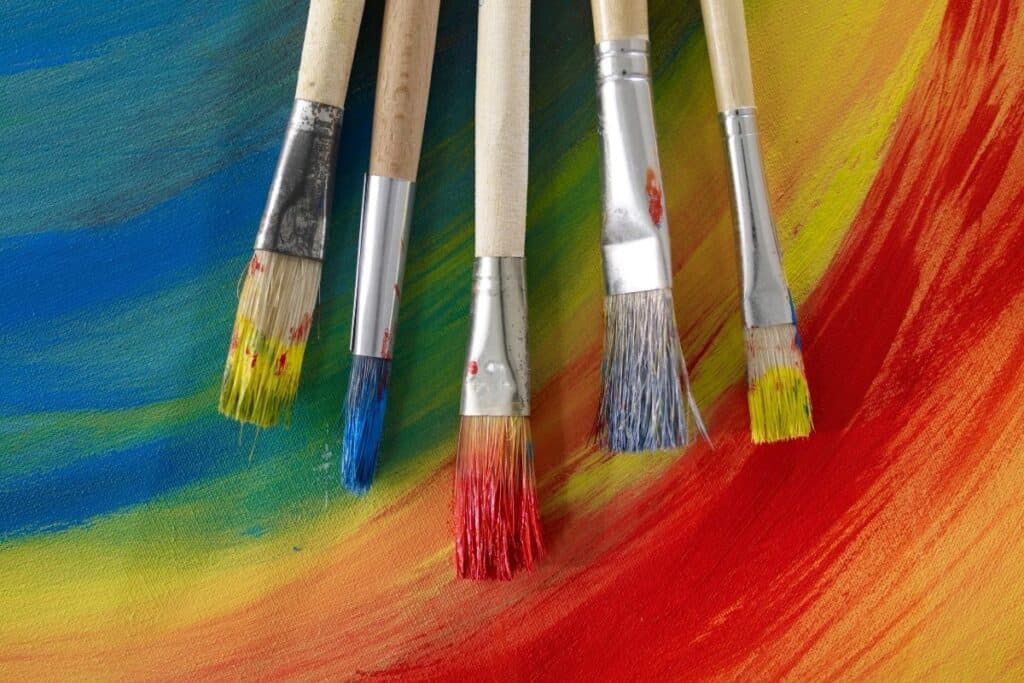
When it comes to safe paints that we can use for birds, we can consider a few typical types.
Here’s a table summary of the different paint types:
| Paint Type | Properties | Cost | Maintenance | Paint Item |
| Oil-based | – Durable and more resistant to low temperatures than latex paint – Smooth application (no need for a second coat of paint) – Requires less pre-paint cleanup: can be applied to dirty surfaces – Great for covering up imperfections – Looks much richer than latex paint – Waterproof | Medium | Medium | Birdhouses, bird baths, bird feeders |
| Latex | – Easy application – Cheaper than acrylic paint – Cleanup is fast with soap and water – Produces fewer dangerous fumes – Requires fewer coats to cover a surface – Waterproof | Low | High | Birdhouses, bird baths, bird feeders |
| Acrylic | – Greater elasticity allows for good expansion and contraction at different temperatures that prevent flaking – Expensive but durable – Highest resistance to the sun’s damage compared to latex and oil-based paints – Waterproof | High | Low | Birdhouses, bird baths, bird feeders |
| Water-based | – Decently resistant but not resistant as oil-based paint – Easy application – Dries faster than other paints – Easy post-paint cleanup – Works well on different wooden surfaces – Waterproof | Low | High | Bird feeders |
| ECOS Paint | – Easy application – Forms hard, washable, durable film upon drying – Suitable for primed or previously painted metal and wood – Not suitable for areas that are permanently wet – Offers wide color selection – Proven completely non-toxic – Waterproof | Medium | Medium | Birdhouses, bird cages |
You’ll see in the table above that different types of paint are recommended to paint different types of bird items.
This is because birds’ level of contact with each item is different.
Do take note of the cost and maintenance that you’ll have to do when you’re considering which paint to buy.
Since there are different types of bird items that most of you like to paint, I wrote up more detailed explanations for each of them.
Read on for more information!
4) Safe Paint for Birdhouses
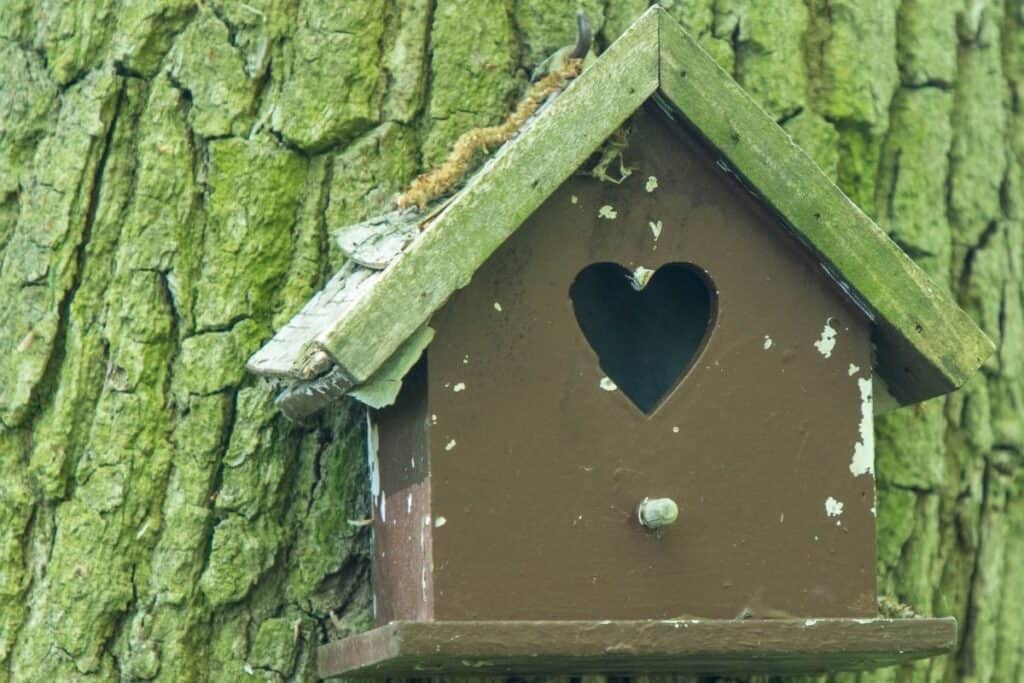
Have you ever wondered: “What kind of paint is safe for birdhouses?” Then you’ve come to the right website!
Here are the types of safe paint you can use for painting birdhouses:
Oil-based, latex, acrylic, or watercolor paints are safe paints for painting birdhouses. Birdhouses are safe to be painted everywhere except at the entrance holes, ventilation holes, and insides of the birdhouse as birds may accidentally consume the paint. Birdhouses should be painted with camouflage-colored paint.
Learn more about why birds aren’t visiting a birdhouse.
Birdhouses shouldn’t be painted at the entrance holes, ventilation holes, and the insides of the birdhouse to ensure that birds have minimal direct contact with the paint!
When birds inhabit the birdhouse, their sharp claws and beaks can easily scrape away bits of paint from the inner walls of the birdhouse.
As such, birds can ingest these small paint chips that fall away.
Of course, all the paint I recommend is non-toxic to birds, but to minimize any unnecessary ingestion of foreign substances at all, don’t paint on the insides!
Additionally, when painting birdhouses, it’s important to get the color right, not just the type of paint!
This is to ensure that birds are safely camouflaged from their predators.
As birdhouses are places where birds choose to nest and bring up their young, they need to be hidden or at least camouflaged from their predators.
I recommend selecting camouflage colors like gray, green, and brown for painting birdhouses.
Camouflage colors like gray, green, and brown attract birds to birdhouses. These colors blend into the natural environment, helping birds feel safe inhabiting them. Bright-colored paint should not be used as it can attract predators. Birdhouses should not be painted black as they can get heated up in summer.
Learn more about safe paint you can use for bird feeders.
5) Safe Paint for Bird Baths
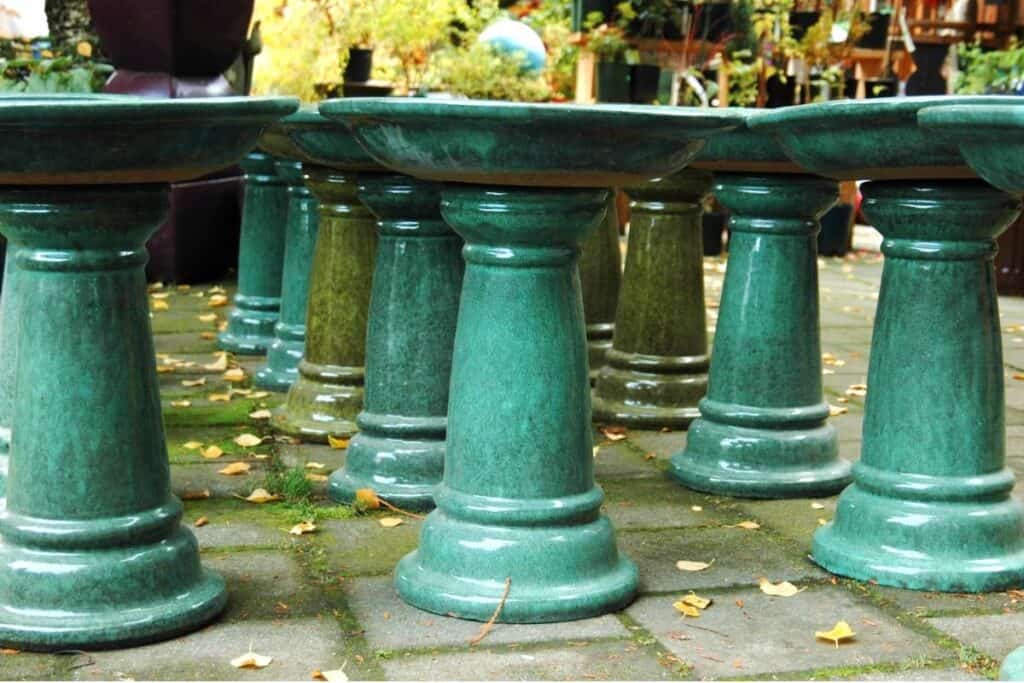
When it comes to the type of safe paint you can use for bird baths, many will have problems finding waterproof ones that won’t harm birds when they fill the basin with water!
Here, I will provide some examples of safe paints you can use to paint bird baths, with some caveats:
Oil-based, latex or acrylic exterior paint is safe for painting birdbaths. Latex and acrylic paints are safe for use on the insides of the basin but not oil-based paint. Oil-based paint is suitable for use on other parts of the birdbath. The paint must be sealed with a non-toxic waterproof sealant and fully dried.
The thing about bird baths is that it has high exposure to water in the water basin at all times, so there is a definite need to use a non-toxic waterproof sealant on top of the paint you use.
Like birdhouses, color is important in painting a bird bath. However, in this case, we want to paint bird baths with bright colors.
Here’s the summary:
Any bright or primary colors are the best colors to paint bird baths. These colors include red and pink to attract hummingbirds, orange to attract orioles, blue to attract bluejays, and yellow to attract goldfinches. Drab camouflage colors like green can attract skittish birds. However, white scares birds away.
Bird baths are places where birds gather to either take a bath or quench their thirst. As such, we need to paint them in bright colors for them to be attracted to the site.
Or else, your bird bath will be less obvious to the birds, which are extremely visually-inclined creatures!
Learn more details about safe paints for bird baths, their color, and the stepwise guide to painting your own.
If you’re learning about bird baths and don’t know that much about them, these articles will get you started!
These topics include how deep a bird bath should be, how to keep bird bath water clean, do bird baths need to be elevated, and how often you should change bird bath water.
6) Safe Sealants for Bird Baths
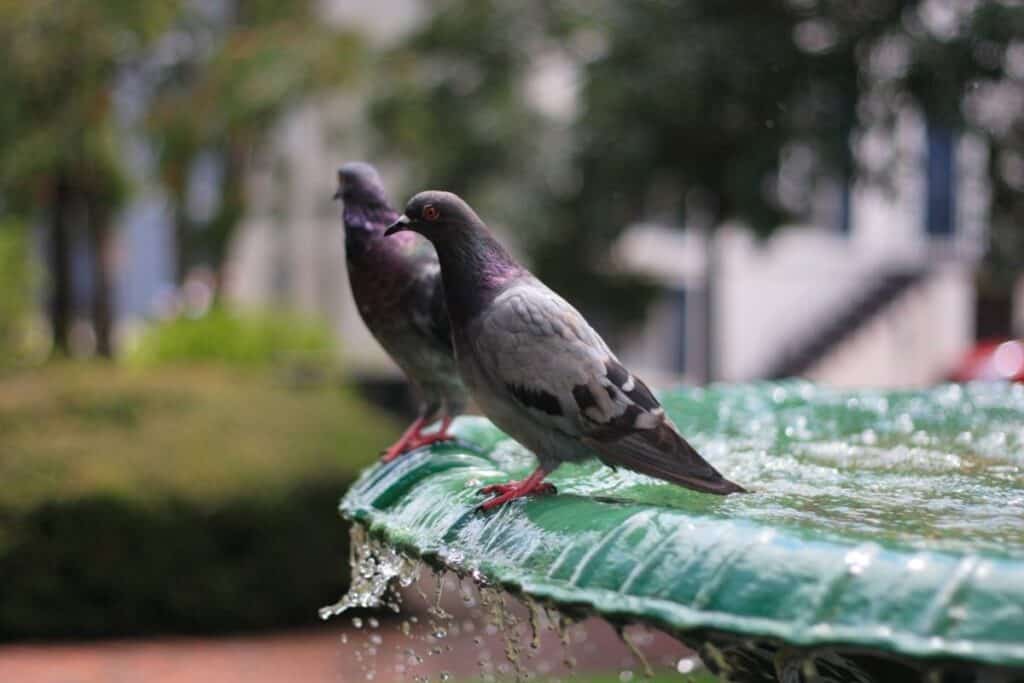
Earlier, I mentioned that for bird baths to be suitable for birds to use in the long term, they need to be further sealed by sealants/sealers.
Sealants are typically sprayed over a painted objected in order to provide a protective layer over paint.
This can result in a hard layer that covers the paint, allowing it to develop waterproof, UV-resistant, and glossy properties.
However, the question that most will ask is this: which are the safe sealants that can be used for birds and bird baths specifically? Here’s the answer:
Bird baths can be sealed using non-toxic, safe sealers such as polyurethane sealers. Other sealers that are safe for bird baths include those sold by Gorilla, Flex Seal, Krylon, and Rust-Oleum. However, these sealers for bird baths are only safe once they are fully cured.
Although if you use the recommended paints in the table I showed above in the article, you will be fine with its already waterproof abilities; a sealant will ensure that the paint will last longer.
Sealants can also act as a protective later against the elements, birds’ sharp claws, beaks, and many other debris!
How so?
When a bird perches on a bird bath, even if they dig into the bird bath surface, it would only scrape off the sealant layer and not directly on the bird bath paint itself.
This also means that your paint is less likely to come off too.
A good non-toxic concrete sealant is crucial if you want to paint on bird baths.
7) Safe Paint for Bird Cages
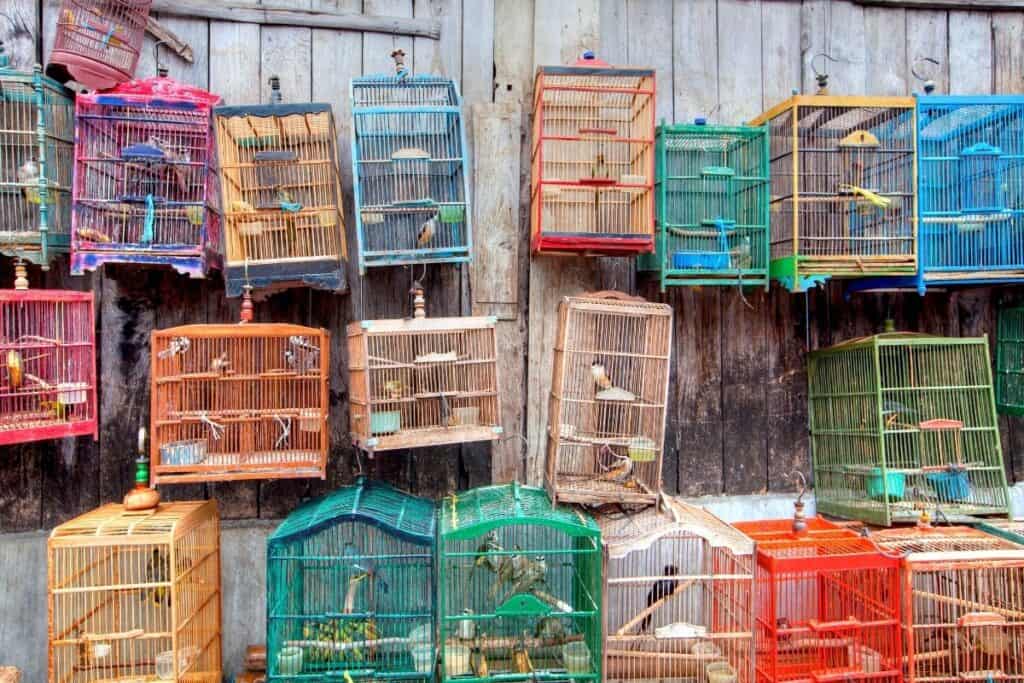
Bird cages require more care when we want to paint them than other bird items.
The pet birds we own are our beloved family members, and we treat them as part of us!
And so, we want their “house” to look pretty too!
However, bird cages are very prone to wear and tear by the claws or beaks of pet birds living in them.
As such, we must ensure they are 100% safe to “accidentally” consume when birds use them.
To be more specific, here are the types of safe paint you can use to paint bird cages:
Water-based paints that do not contain lead, zinc, chromate, or VOCs are safe for painting bird cages. Paint used for bird cages should also bond well to metal and dry fast. Non-toxic spray paint can be used for bird cages but must be allowed to dry for about one week after three coats of paint.
Zinc, chromate, and Volatile Organic Compounds (VOCs) are toxic chemicals; extra care must be taken to ensure they do not constitute the paint.
As it may not be easy to identify paints that clearly label this, I recommended safe paint for bird cages.
In the article linked above, I include information about the toxic materials you need to avoid, examples of recommended paint by ECOS Paints, and a stepwise guide on how to get started.
To give you a teaser, here’s the founder of ECOS paint, who ate his paint to prove it’s non-toxic. Talk about dedication to his craft!
You won’t regret reading it!
If you have a pet bird, you might also find these articles relatable: Why do birds bite our mouths, why love birds attack each other, and safe paper you can give your birds to play with!
8) Safe Paint for Bird Feeders
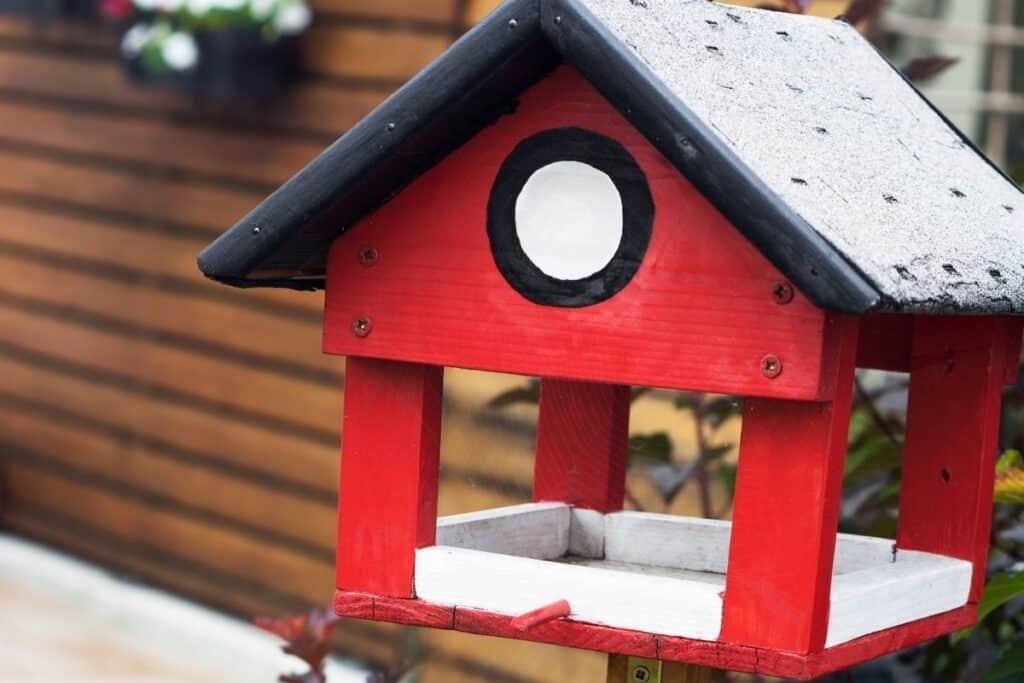
Do you have a wooden bird feeder and want to begin painting it but don’t know how? No worries, I’ll cover that right now!
We must use the right paint when we want to paint bird feeders.
Why?
That’s because bird feeders are where birds feed directly from.
If we adopt the wrong practices while painting, the birds might accidentally consume toxic materials and die.
We want to avoid that at all costs!
This is one of the 29 reasons birds won’t come to feeders.
Here are three types of safe paints for bird feeders:
Oil-based, latex, acrylic, or watercolor paints are safe paints for painting bird feeders. Bird feeders are safe to be painted everywhere except on the interior surfaces as birds may accidentally scratch off and consume the paint. Bird feeders should be painted with any bright and primary colors.
One important point I NEED to re-emphasize: Do NOT paint on the interior surfaces of a bird feeder!
This is because the interior surfaces will be frequented by birds more often and may cause them to be scratched off more easily.
Even with bird-safe paint, we’ll try not to let any paint get scratched off and ingested!
If you’re serious about painting your bird feeder, do make sure you read it first. I’ve included a handy table of paint you’ll need and some practical steps you’ll need to get started!
9) Safe Paint for Different Materials
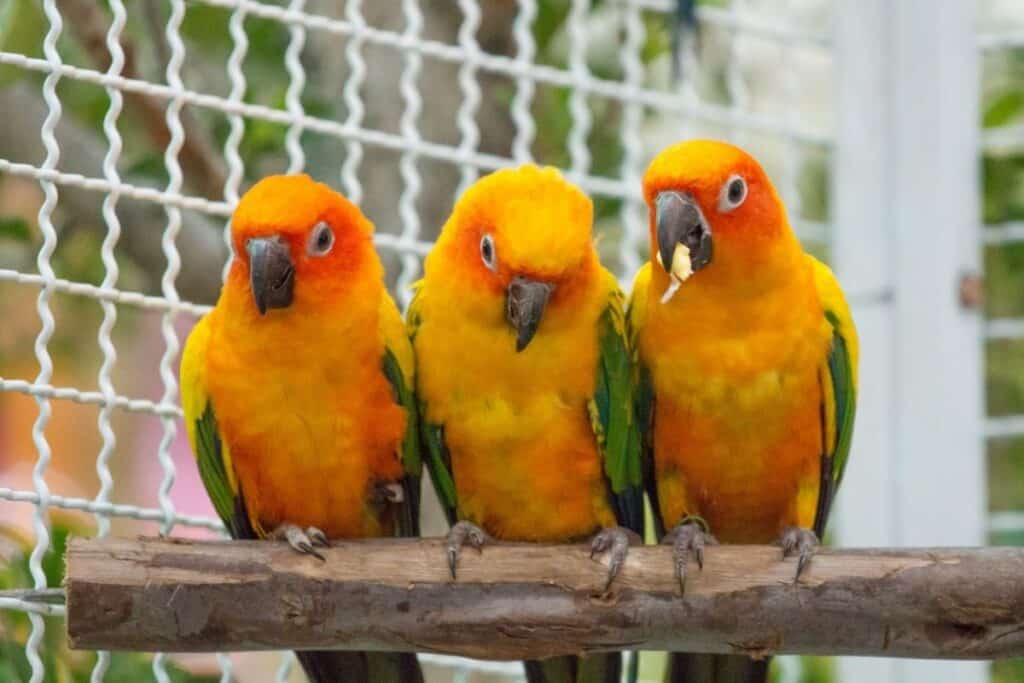
Sometimes… you won’t need to buy any new bird items if you already have them at home!
And you may not have the typical material for painting.
I see that most articles online only cover painting typical bird items: concrete for bird baths, wood for birdhouses, and metal for bird cages.
Here’s a general guide for safe AND suitable paints you can use for different materials:
| Type of Paint | Bird Item Material | Recommended Paint |
| Latex/Acrylic | Wood, metal, plaster, masonry (concrete), and ceramic | Rust-Oleum: Painters Touch Latex, Gloss Navy Blue, 32 Fl Oz |
| Oil and Enamel | Wood, metal, masonry (concrete) | Rust-Oleum: Stops Rust Brush On Paint, Satin Hunter Green, 32 Fl Oz |
| Oil and Enamel | Wood, plastic, metal, fiberglass, concrete, wicker, vinyl | Rust-Oleum: Universal Enamel Spray Paint, Gloss Canary Yellow, 12 oz |
Do make sure you clean up with a wire brush before you apply any oil, acrylic, or enamel paint.
10) Safe Spray Paint for Birds
Spray oil-based, latex or acrylic paint is safe for bird baths. However, only latex and acrylic paint should be sprayed on the insides of the basin, not oil-based paint. Oil-based paint can be sprayed onto the other parts of the bird bath. A non-toxic sealer must be applied after.
11) Is It Safe To Use Spray Paint On A Bird Bath?
It is safe to use spray paint on a bird bath. Bird baths should only be spray painted with oil-based, acrylic, or latex paints, and oil-based paint should not be used on the basins of bird baths. Rustoleum spray paint can be used for bird baths.
Recommended Acrylic Spray Paint: Molotow Urban Fine-Art Artist Acrylic Spray
The Molotow Urban Fine-Art Acrylic Spray is a great acrylic spray paint that’s great and safe for painting bird baths. Do remember to apply the sealer after to keep it waterproof.
You should also check out this video on how you can set up to spray paint your bird bath!
12) How Long After Painting Is it Safe for Birds?
It takes about one week after painting for it to be safe for birds. After about a week, the paint should be fully cured, and any remaining fumes should dissipate. However, paints that do not contain Volatile Organic Compounds (VOCs) take a shorter time of 2 to 4 days to be safe for birds when it is fully cured.
13) Is Behr Paint Safe for Birds?
Behr paint is safe for birds if it contains low or no VOCs. Paints that do not contain Volatile Organic Compounds are safe for painting bird baths.
14) Can Paint Fumes Kill A Bird?
Paint fumes are not likely to kill a bird. Although Volatile Organic Compounds (VOCs) in some paints may harm birds, modern interior paints like oil-based paint, latex paint, and acrylic paint contain low or no VOCs. Paint fumes should be allowed to dissipate away right after a paint job.
15) Is Polyurethane Safe For Birds?
Polyurethane is safe for birds as a waterproof sealant on top of the paint. Polyurethane is non-toxic and eco-friendly that is not harmful to birds, plants, and other animals. Polyurethane is safe to be applied as a sealant after a double-coated paint job.
Polyurethane is one of the best choices to seal a bird bath after you’re done with your paint job.
That’s because it’s non-toxic, can withstand the outdoors, and is water-resistant. Great for birds!
Recommended Polyurethane Sealant: SEAL-ONCE Nano+Poly Concrete & Masonry Penetrating Sealer & Waterproofer (1 Gallon/5L)
For my recommended product, I found this really good polyurethane sealer from SEAL-ONCE, which ticks off all the requirements on my list.
It’s water-resistant, UV-stable, and maintains the original color of the paint underneath well!
Final Thoughts
Well, that’s all I have for you regarding safe bird paints!
Thanks for reading this super-long article.
I hope you’ve found this resource useful and are ready to start your painting project!
I wish you all the best and for birds to love your paint job!
Happy birding!
My Recommended Birding Resources:
Hey there, Justin here!
Here’s a list of all my favorite resources, products, and brands I trust and love.
My Celestron Nature DX 8×42 Binoculars: It’s a great budget pair for beginner birders. Highly valued for its price! Read my review.
Safe Paint for Bird Baths Guide: Learn about non-toxic paint for painting bird baths.
Safe Sealers for Bird Baths Guide: Learn which sealers are safe for bird baths.
Safe Paint for Bird Feeders Guide: Learn what special care needs to be taken to paint bird feeders with the right paint.
Safe Paint for Birdhouses Guide: Learn about non-toxic paint for painting birdhouses. (Not the same as bird baths!)
Bird Identification Apps Guide: 2 of my favorite birding apps are Merlin Bird ID, and eBird Mobile! Merlin is great for tracking and identifying birds, and eBird Mobile is great for tracking the birds sighted when birding.
Check out my resources page for the full list of resources I recommend!

Justin Chia
Justin is the founder and author of Birding Outdoors. He is a Nanyang Technological University (NTU) alumnus with a Bachelor of Biological Sciences and a former data analyst.
Now, Justin runs the Birding Outdoors blog full-time, hoping to share his deep love for birds, birding, and nature with others.
To unwind, Justin enjoys gaming and reading.

